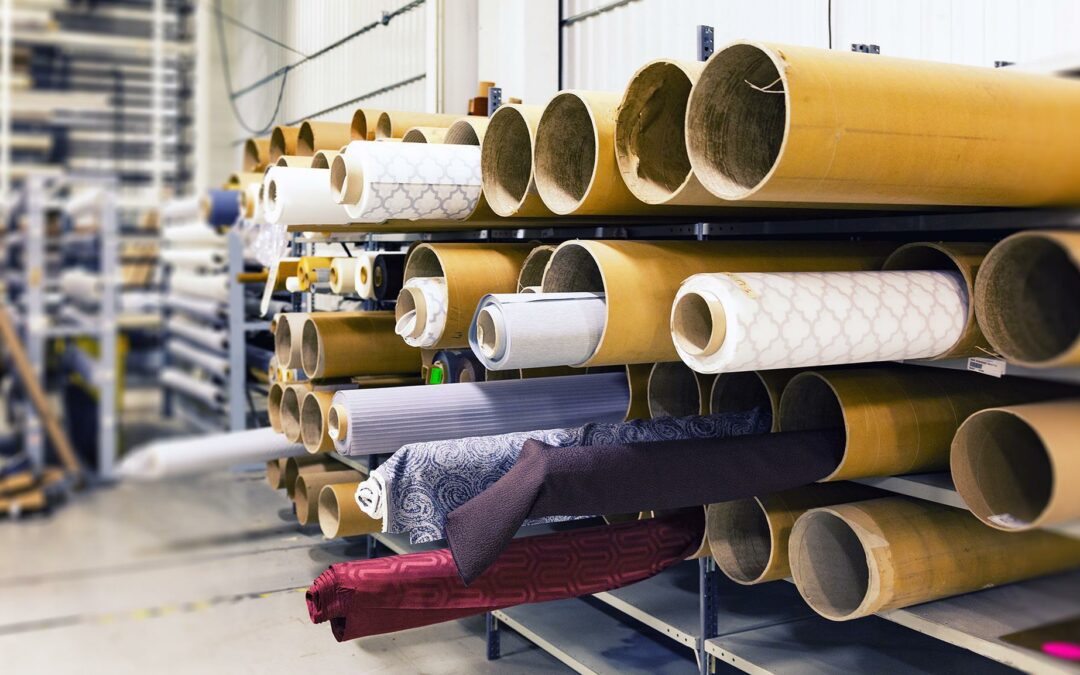What is digital fabric printing?
Digital fabric printing is the process of applying coloured patterns and designs onto fabrics wherein the colours are applied in a sharply defined manner. Colours are affixed to the fibre in such a way that it may not get affected by washing and friction.
Digital fabric printing comprises printing digital files on the fabric, where the printing part of the process will most likely work like your desktop inkjet printer. The printing element is just one part of the larger process.
Digital fabric printing ink technologies are of different types. All these varied technologies work on their specific fabric types and are best suited to particular purposes alongside offering varying print qualities. Regarding fabric printing services, the type of fabric printing also determines your printed design’s price and longevity.
Take a waxy quality t-shirt, for example, when compared to the print design where the print effectively sits on top of the fabric, whereas in the other one, you can feel no difference in the material.
People mostly think that dying is the same as printing. However, that is usually not the case. Dying may be similar to printing but dying involves a uniformly covered portion of fabric with the colour, whereas printing involves printing repeated patterns all over or on a certain part of the fabric.
Checkout – THE DEPENDENCE ON SUSTAINABILITY IN DIGITAL FABRIC PRINTING
Things to know before you are ready to print
Colour
There is no such restriction on the use of colour, so you are free to play around with colours in your design. Digital printing on fabric is designed to help you achieve photo quality detail hence do not hold back from using colours immensely.
Fabrics
When it comes to selecting fabric, it is usually a matter of taste. It is always best to have options; what can help with that is a good fabric sample book, that way, you will be able to see and feel the fabric’s handle. The samples will give you an accurate idea of how a comparable print looks on each material. It is totally up to you to decide which fabric is best suited for your firm’s fabric printing in the UK and the end result you want to achieve covering the cost and margins alongside.
File standards
As a rule of thumb, the file standard should be RGB, between 150–300 DPI. The files should be saved as Jpegs at the right scale in which you want them printed.
File orientation
The fabric runs down the height of your file, which leaves the cut edges to be top and bottom and the salvage of the material runs down the sides in digital fabric printing.
How does the process of digital fabric printing work?
Digital printing is different from traditional screen printing. You would require a thick ink fixer in traditional screen printing, incorporated into the ink itself. While in digital printing, this fixer would clog up a printer’s ink head; therefore, it has to be applied to the fabric before it is printed. This pre-process is referred to as the ‘padding’ or pre-treatment.
Next up, the new pre-treated fabric is then print tested, and the printer is gauged to the amount of ink that fabric can hold in order to achieve a crisp and prominent print. Too much or too little can affect the accuracy and brightness of the print. The average warpage is gauged. Then the fabric is given a profile which is used by the printer each time it prints this particular fabric.
The digital printing process starts right after that when your fabric is placed on the printer; the ink head is set to the right height for the fabric. The height will usually differ depending on the fabric. This is taken into consideration as it protects the ink heads and affects the crispness of the printing.
Summary
At forest digital, we work with a number of designers across both fashion and interior sectors. We take care of the printing process of fabrics whether you want them for an entire season or just for short-term use. The digital fabric printing service at forest digital involves taking care of the full printing process. From assisting with print design, adjusting the ink colours, printing the fabric, and manufacturing a finished product. Our high-spec software can work with large format designs. Which enables us to offer bespoke and peculiarly tailored digital print services for every client.
Our fabric and textile collection is also approved for the successful application of digital print. For appropriate digital printing on fabric, you have to know that each fabric base has its exclusive ink and machine set on a digital fabric printer.
Know more about digital textile printing here.

